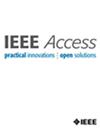D2CBDAMAttUnet: Dual-Decoder Convolution Block Dual Attention Unet for Accurate Retinal Vessel Segmentation From Fundus Images
IF 3.4
3区 计算机科学
Q2 COMPUTER SCIENCE, INFORMATION SYSTEMS
引用次数: 0
Abstract
Gathering detailed morphological information from retinal blood vessels is crucial in clinical diagnostics, enabling doctors to make precise assessments of patient conditions and to devise custom treatments. Traditional methods of segmenting these vessels from fundus images are not only tedious but require a high degree of specialized knowledge. In light of this, Deep Convolutional Neural Networks (DCNNs), particularly those based on the U-Net architecture, have been acknowledged for their effectiveness in capturing and utilizing contextual features within this context. However, these methods often grapple with challenges such as loss of vital information during pooling and insufficient handling of local context in skip connections, leading to less than optimal results. To address these limitations, this research propounds the novel Convolution Block Dual Attention Module (CBDAM), as well as two pioneering network architectures: The Convolution Block Dual Attention Module Unet (CBDAMUNet) and the Dual Decoder Convolution Block Attention Module with Attention U-Net (D2CBDAMAttUnet). These are built upon a fortified encoder-decoder structure aimed at providing an automated, streamlined detection mechanism from fundus imagery. Thoroughly tested against the DRIVE, CHASEDB1 and STARE datasets, recognized standards in retinal vessel segmentation, the proposed models not only redefine the accuracy benchmarks but also represent a significant stride in automated retinal vessel analysis. The introduction of these advanced networks is a milestone in ophthalmologic diagnostics and research, offering a potent asset for medical professionals and specialists in the field.求助全文
约1分钟内获得全文
求助全文
来源期刊

IEEE Access
COMPUTER SCIENCE, INFORMATION SYSTEMSENGIN-ENGINEERING, ELECTRICAL & ELECTRONIC
CiteScore
9.80
自引率
7.70%
发文量
6673
审稿时长
6 weeks
期刊介绍:
IEEE Access® is a multidisciplinary, open access (OA), applications-oriented, all-electronic archival journal that continuously presents the results of original research or development across all of IEEE''s fields of interest.
IEEE Access will publish articles that are of high interest to readers, original, technically correct, and clearly presented. Supported by author publication charges (APC), its hallmarks are a rapid peer review and publication process with open access to all readers. Unlike IEEE''s traditional Transactions or Journals, reviews are "binary", in that reviewers will either Accept or Reject an article in the form it is submitted in order to achieve rapid turnaround. Especially encouraged are submissions on:
Multidisciplinary topics, or applications-oriented articles and negative results that do not fit within the scope of IEEE''s traditional journals.
Practical articles discussing new experiments or measurement techniques, interesting solutions to engineering.
Development of new or improved fabrication or manufacturing techniques.
Reviews or survey articles of new or evolving fields oriented to assist others in understanding the new area.
 求助内容:
求助内容: 应助结果提醒方式:
应助结果提醒方式:


